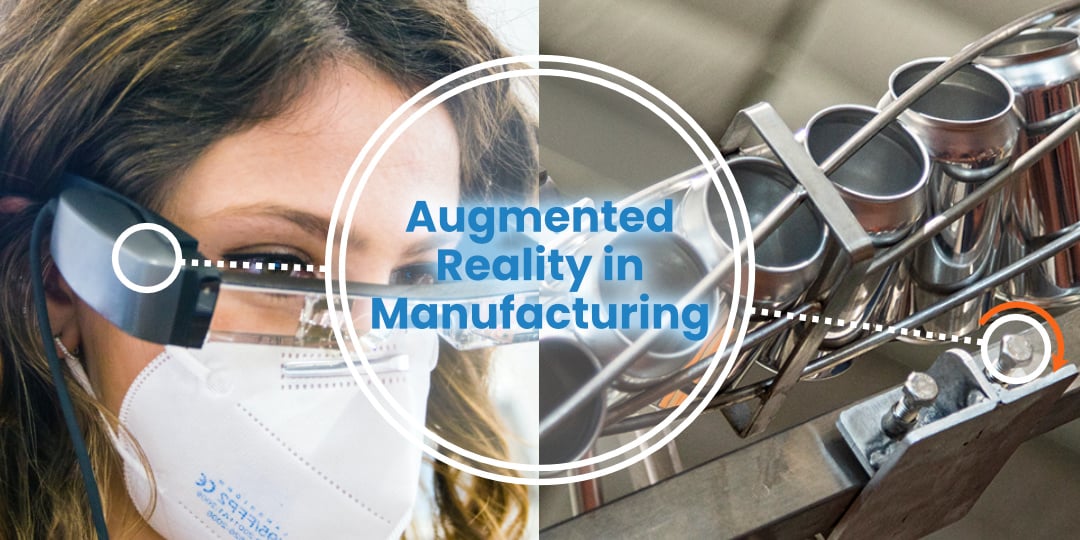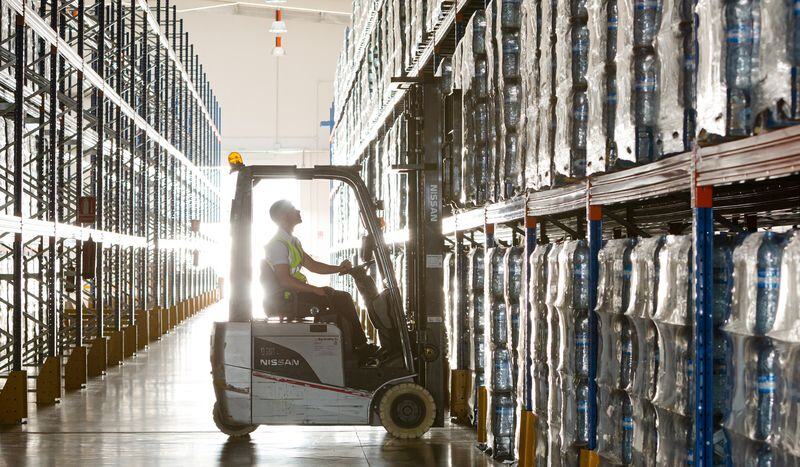Augmented Reality in Manufacturing: What is It and What Does it Do?
From metaverse to augmented reality, these terms are spinning a bunch of buzz around them, but what do they really mean? There continues to be a lot of discussion around augmented reality in manufacturing. However, we have not seen a breakthrough use case to date that has uncovered a trove of value creation.
At Veryable, we’re interested in augmented reality because of the assistance it can bring to US manufacturing looking to rebuild after decades of decline.
In this article, we’ll discuss what role augmented reality can play in manufacturing, where it adds value, and where it doesn’t.
Augmented Reality Definition
Augmented reality is the use of computer-generated audiovisual information to augment the user’s interaction with the physical world in real-time.
Another solid definition of augmented reality is found at Interaction Design Foundation and states:
“Augmented reality (AR) is an experience where designers enhance parts of users’ physical world with computer-generated input. Designers create inputs—ranging from sound to video, to graphics to GPS overlays and more—in digital content which responds in real time to changes in the user’s environment, typically movement.”
In a manufacturing environment, this means that the operator’s experience is being enriched through the visual representation of cues or job-aid resources to assist in the successful, one-time-through completion of the job.
Augmented reality has certainly had its share of hype, particularly in the consumer world with the introduction of Google Glass, which has not been widely adopted. However, we have seen a successful adoption of voice-pick, which is a form of augmented reality with aural delivery of tasks and information that free the operator’s eyes to focus on the activity at hand. A widely used voice-pick tool is Jennifer by Lucas Systems.
Forms of Augmented Reality
There are three main forms of augmented reality in manufacturing and warehousing environments: real-time work instructions, real-time collaboration tools, and real-time work guidance.
Real-Time Work Instruction Tools

One common use of augmented reality is for real-time work instructions. This makes the steps of the work more clear for the worker and results in increased consistency.
Augmentir is one such tool that delivers instructions to workers. A wearable device enables delivery of instructions visually so that operators can work unobstructed.
Knowledge sharing and real-time instruction result in more clear work for operators, which in turn produces less variance in production.
Real-Time Collaboration Tools
Real-time collaboration is closely related to work instruction. This takes the instruction one step further by allowing for two operators or an operator and supervisor to work together in real-time, regardless of their physical location.
Taqtile is one such tool that enables real-time collaboration in a manufacturing or warehousing environment. It can be used with AR headsets as a real-time collaboration tool for receiving and authoring instructions.
Tools like Taqtile allow operators to capture new information as needed so that processes can be improved with real-time feedback from the shop floor.
Real-Time Work Guidance
The final form of augmented reality in manufacturing and warehousing is real-time work guidance. This differs from the previous two forms in that this guidance is projected onto the physical world rather than being an overlay seen through an AR headset.
An example of a real-time work guidance solution is LightGuide. This system projects instructions and information onto the actual work in progress, without the need for the operator to wear a headset. This is most useful in situations where there is a frequently repeated series of steps that will remain the same each time it is conducted.
Outcomes of Augmented Reality in Manufacturing and Warehousing
The main goal of augmented reality in a manufacturing or warehousing environment is to build quality into processes. To do this, a successful solution must collapse the learning curve for new workers, deliver work instruction in real-time at the point of need, reduce search times for relevant content, and reduce error rates.
Because augmented reality solutions can be used with headsets that do not obstruct movement, they can present work instructions in real time and eliminate the need for the operator to walk away in search of relevant content.
This real-time delivery can eliminate the need for some of the training that would traditionally be done before the operator could work. This reduces the learning curve for workers.
With a reduced learning curve and standardized work instructions delivered in real time as operators need them, a reduction in error rates is almost certain to follow.
Thus, augmented reality accomplishes the goal of helping build quality into processes. This is not a crutch or a magic bullet; rather, it is a powerful tool for your operations to use.
Drawbacks of Augmented Reality in Manufacturing and Warehousing
There are a couple drawbacks of augmented reality in the context of manufacturing and warehousing.
First, if an accomplished operator already knows what they should be doing and consistently performs well, they could be slowed by interference from an augmented reality device. The intrusion into their established rhythm and workflow might do more harm than good if they are high performers already. This is easily solved by simply allowing high performers not to use the augmented reality system. Or, you could invite them to author content for other operators who aren’t performing as well so the others can learn from their example.
The second drawback is that the AR headsets could compromise the field of vision for operators. This would mainly be of concern in work conditions where the full field of vision is necessary for safety reasons. There is a small range of headsets to choose from, each obstructing a different amount of the field of vision. If there is not a solution currently available that allows the field of vision your operators need, you might have to opt for a handheld AR solution or wait until such a headset is available.
Augmented Reality Unlocks New Approaches to Work

With lower barriers to entry into the workforce, your facility can bring in workers it otherwise wouldn’t. Because the workers don’t have to be trained nearly as much before they can produce on par with your full-timers, you gain the option to offer flexible work opportunities.
Imagine if you could add an extra shift when you receive a big order, and instead of asking everyone to work overtime and crossing your fingers, you could just bring in some extra workers for that shift to do the work.
This is only one example of the flexibility you can unlock with augmented reality solutions. In fact, you can get started with this kind of flexibility before you implement augmented reality.
Veryable helps companies gain flexible labor capacity every day. Read our blog to learn more about on-demand labor and how this new approach to work can benefit your company.
Previous Posts
Trump 2.0 Week 13 Recap: Discussing Ongoing Negotiations With Key Trade Partners, A Potential Deal With China On The Horizon, and More
The Future of Manufacturing and Logistics
Create a free business profile today to explore our platform.






